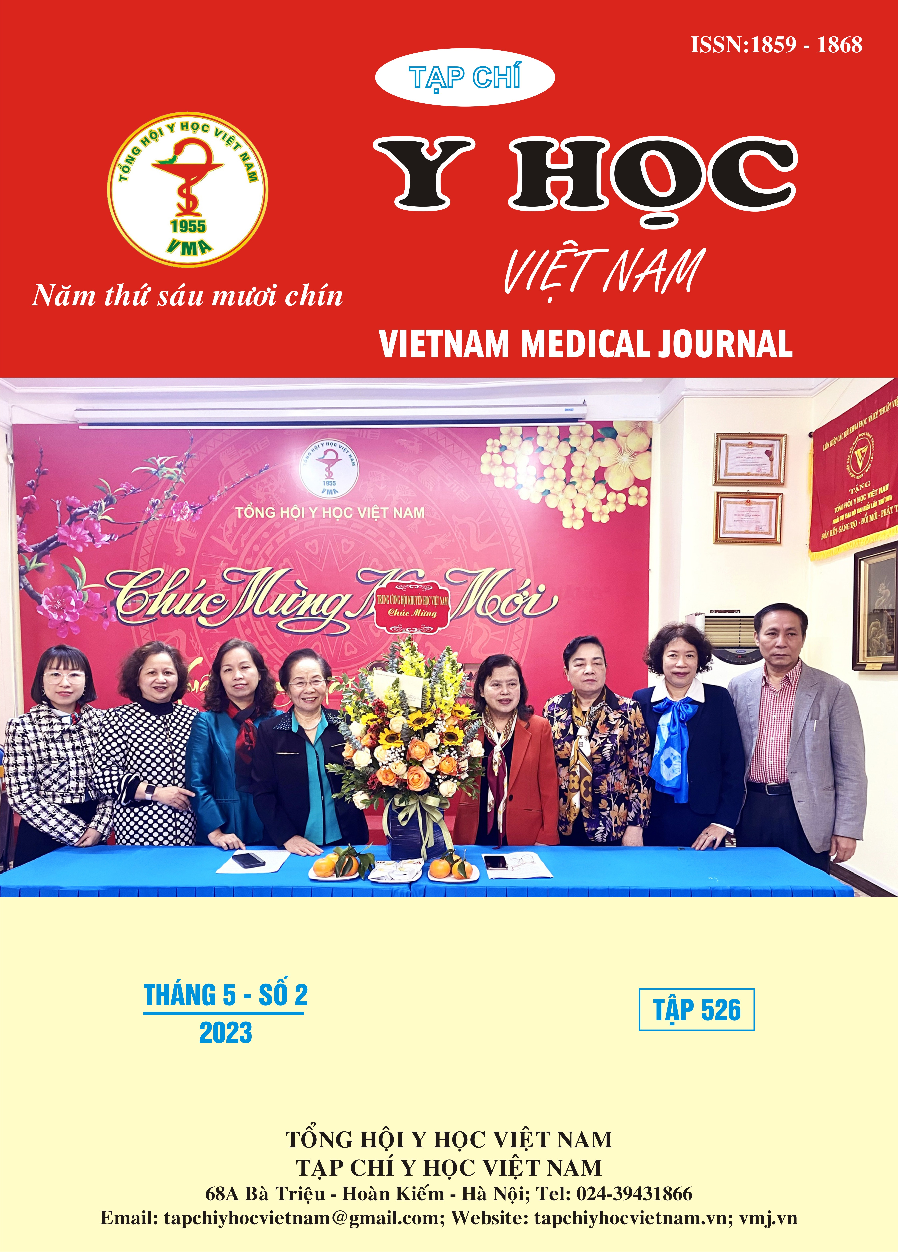CÁC HỘI CHỨNG LÃO KHOA VÀ BỆNH ĐỒNG MẮC Ở NGƯỜI LOÃNG XƯƠNG CAO TUỔI
Nội dung chính của bài viết
Tóm tắt
Mục tiêu: mô tả các hội chứng lão khoa và thực trạng các bệnh đồng mắc ở người bệnh loãng xương cao tuổi. Phương pháp nghiên cứu: Nghiên cứu mô tả cắt ngang được thực hiện từ 09/2021 – 09/2022 ở bệnh nhân loãng xương tuổi ≥ 60 tuổi, khám và điều trị tại Bệnh viện Lão khoa Trung ương. chẩn đoán loãng xương theo tiêu chuẩn WHO năm 1994 dựa trên mật độ xương. Kết quả: Trong nhóm nghiên cứu 285 bệnh nhân loãng xương, tuổi trung bình là 72,7 ± 8,7, nữ giới chiếm tỷ lệ cao hơn với tỷ lệ 85,6% (244 người). Bệnh mạn tính kèm theo mà bệnh nhân mắc phải nhiều nhất là tăng huyết áp (37,9%); sau đó là thoái hóa cột sống thắt lưng với 30,2%, thoái hóa khớp gối (27,0%) và rối loạn mỡ máu (19,7%), đái tháo đường (14,0%). Có 5,6% bệnh nhân từng phẫu thuật cơ xương khớp (CXK) và 9,8% bệnh nhân đã từng gãy xương từ tuổi trung niên (40 tuổi). Tỷ lệ loãng xương tại cột sống thắt lưng (CSTL) (66,3%) cao hơn vị trí ở cổ xương đùi (CXD) (11,2%). Tỷ lệ giảm mật độ xương ở CXD là 48,4% cao hơn vị trí CSTL (15,4%). Có 50,9% bệnh nhân khó khăn về hoạt động hàng ngày (ADL) và 42,3% khó khăn hoạt động hàng ngày có sử dụng dụng cụ (IADL). Đánh giá tình trạng dinh dưỡng - thang đo MNA-SF thấy rằng bệnh nhân trong nghiên cứu có nguy cơ suy dinh dưỡng (SDD) chiếm 36,8% và suy dinh dưỡng chiếm 11,6%. Kết luận: Tỷ lệ các hội chứng lão khoa cao ở người loãng xương cao tuổi do đó cần sàng lọc và đánh giá toàn diện ở nhóm đối tượng này để có hướng điều trị phù hợp.
Chi tiết bài viết
Từ khóa
loãng xương, người cao tuổi, hội chứng lão khoa.
Tài liệu tham khảo
2. Nguyễn Thị Ngọc Lan. Loãng xương nguyên phát, Bệnh học cơ xương khớp nội khoa. Nhà xuất bản Y học, Hà Nội; 2011.
3. International Osteoporosis Foundation. Thematic Report “Stand Tall, Speak Out” July 2008. Invest in Your Bones: Stand Tall, Speak out. Take Action to Promote Osteoporosis Policy Change. World Osteoporosis Day 2008.; 2008.
4. Dương Thanh Bình. Thực trạng loãng xương ở phụ nữ mãn kinh đến khám tại bệnh viện Hữu Nghị Việt Nam - CuBa Đồng Hới. Tạp Chí Thông Tin Khoa Học Công Nghệ Quảng Bình. 2018:79-81.
5. Đỗ Minh Sinh. Thực Trạng Loãng Xương và Một Số Yếu Tố Liên Quan ở Người Cao Tuổi Tại Xã Tam Thanh, Vụ Bản, Nam Định. Luận văn Thạc sĩ Y tế Công cộng. Trường Đại học Y tế Công cộng, Hà Nội; 2012.
6. Thái Phương Oanh. Thực Trạng Loãng Xương và Một Số Yếu Tố Liên Quan ở Người Cao Tuổi Tại Phường Láng Hạ, Quận Đống Đa, Hà Nội, Năm 2011. Luận văn Thạc sĩ Y tế Công cộng. Trường Đại học Y tế Công cộng, Hà Nội; 2011.
7. World Health Organization (1994), Assessment of fracture risk and its application to screening for postmenopausal osteoporosis: report of a WHO study group, World Health Organization.
8. Drosselmeyer J, Rapp MA, Hadji P, Kostev K. Depression risk in female patients with osteoporosis in primary care practices in Germany. Osteoporos Int J Establ Result Coop Eur Found Osteoporos Natl Osteoporos Found USA. 2016; 27(9):2739-2744. doi:10.1007/s00198-016-3584-9
9. Nguyễn Thị Thanh Hải. Ngã và Một Số Yếu Tố Liên Quan Trên Bệnh Nhân Cao Tuổi Có Loãng Xương Tại Bệnh Viện Lão Khoa TW. Luận văn Thạc sĩ Y Học. Trường Đại học Y Hà Nội; 2021.
10. Nguyễn Thế Hoàng. Sarcopenia và Một Số Yếu Tố Liên Quan Trên Bệnh Nhân Cao Tuổi Có Loãng Xương. Luận văn Thạc sĩ Y Học. Trường Đại học Y Hà Nội; 2021.


